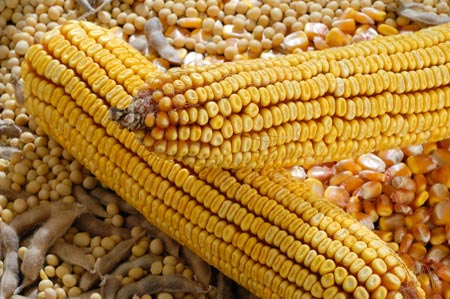 (Corn and Soybean Digest) – As your yield monitor displays numbers never before seen, you wonder how you will be able to pay for putting in a crop next year, particularly if you don’t have crop insurance or have a high deductible. When you get to the point of putting pencil to paper to calculate 2013 crop budgets, the cost may not be as much as you anticipated. The only problem is, can you rely on today’s estimates when it comes time in estimating your profit margin next year.
(Corn and Soybean Digest) – As your yield monitor displays numbers never before seen, you wonder how you will be able to pay for putting in a crop next year, particularly if you don’t have crop insurance or have a high deductible. When you get to the point of putting pencil to paper to calculate 2013 crop budgets, the cost may not be as much as you anticipated. The only problem is, can you rely on today’s estimates when it comes time in estimating your profit margin next year.
There are a lot of uncertainties in trying to cobble together a budget for next year’s crop production. You will have to do it soon as seed companies pressure you for an order and you book anhydrous ammonia for fall application. But University of Illinois Farm Management Specialist Gary Schnitkey has presentedsome numbers that seemingly allow more profitability than one would have imagined. But to his credit, Schnitkey raises questions about the certainty of revenue based on his estimated market prices for corn and beans in the coming year.
Starting from the top, Schnitkey uses trend line yieldsfor corn and soybeans, which will be 195 and 57 bu., respectively, in 2013. Trend line yields were used for 2012 budgets and did not turn out that way, but using those estimates provides a necessary starting point. The value of the crop is one of the bigger question marks, but Schnitkey suggests using $6 for corn and $12.50 for soybeans based on prices that are currently projected by the futures market for harvest prices next year. Aug. 23 futures prices for both corn and soybeans were about 9% above that level. However, Schnitkey says that projects gross revenue of $1,170 and $713/acre for the two crops.
A big issue that farmers will have to resolve on their own is cash rent and other land cost, and Schnitkey does not address land cost, so his budget is based on a return to labor, management and land.
Direct costs for corn are lead with fertilizer, and Schnitkey reports a $10 reduction in fertilizer cost from 2012, with $155/acre estimated. Seed cost is estimated at $100/acre, up $2 from last year, pesticide is at $52, also up $2. Some farmers may find his seed estimate conservative, based on expected higher prices due to drought-reduced supplies. But if farmers are forced to plant lesser desirable hybrids, then seed costs may not be as high. Storage and drying costs remain at $27, and crop insurance is steady at $28/acre. That puts total direct costs at $362, which is a $6 cut from 2012.
Power costs are $92/acre, which is up only $2 from the current year, and that is attributed to machinery depreciation. Other overhead costs are labor, insurance, building costs and those are all steady at $62/acre.
For corn, his non-land cost is $516 for corn production, and is allocated for a return to land of $302 and a $90 return to management and labor. That leaves a $262 net return, which has to cover cash rent or other land costs.
For soybeans, Schnitkey is budgeting a $177 direct cost to cover crop inputs, which is down $1 from 2012 with the primary reduction from fertilizer, although seed and pesticide costs will be slightly higher. For soybeans his power costs are $83/acre, up $3 from last year, due to machinery depreciation. Overhead costs remain at $48 from last year; and that puts total non-land cots at $308, up only $2 from 2012. The soybean return to operator and land is $405, which leaves only $18 for a net return that needs to be applied against cash rent or other land costs.
Based on returns to land, which are $45 less for corn and $79 less for soybeans, compared to 2012, Schnitkey says, “These fundamentals do not suggest that increases in cash rents should occur in 2013.” His numbers do promote corn production over soybeans for 2013 because of the $244/acre additional return, and he says that is large compared to historical numbers that have averaged about $75/year for the past six years. However, he says, “Whether these relative prices persist into 2013 is an open question, depending on demand conditions and harvests in both North and South America. Whether these relative prices influence 2013 planting decisions also is an open question.”




